Pre-historic period
Early history of Kerala is not clear. Explorations in certain regions have shown the evidences for pre-historic men of Stone Age and Neolithic era in Kerala. Early forms of monuments, burial urns, ornaments utensils and weapons found from the burials confirmed the existence of megalithic culture. Researchers are of opinion that the period of megalithic culture was from 10th century BC to 5th century AD. It is believed that the ancient Kurumba are the dolmen-builders of Kerala. It is also believed that they were the forerunners of all religions and they moved from the west coast of Kerala to all parts of the world. The Dravidians, who migrated from Mediterranean area attained their supremacy in the Kaveri and Godavari river basins and later extended to the Western Ghats. The advent of Dravidians to South India was between 1750 and 1400 B.C. Historians say that radical changes occurred in socio-cultural fields with the advent of Dravidians. The most important of them is the language. The South Indian languages including Malayalam originated from the early Dravidian language. During this period matriarchal and patriarchal systems were prevailing. Sangam Age

Clay sculptures of Sangam age
Kerala was a part of Dravidian civilization during the Sangam age, which comprised the first five centuries of the Christian era (A.D 1st to 6th Century). The political history of Kerala during this period was mainly of the Aay, Chera and Nanna dynasties. Aaykkudy was the capital of Aay Kings. Vanchi was the capital of Chera Kings. Nanna dynasty’s capital was Ezhimala. The Sangam works Pathittupattu, Akananooru, Purananooru give a clear account of the early social and political situations of Kerala. During the Sangha era, the social divisions like haves and have-nots, the superiors and subordinates came into existence. The system of burning dead bodies was in practice during this period. The chastity of ladies was highly recognized during this period. Polygamy was in practice. There was an independent style of life between men and women. Love marriages were not rare. The marriage function was grand like that of today. Females wore clothes made of cotton or silks. They also wore ornaments.
Aryan migration
The Aryans started their migration to Kerala towards the beginning of A.D. Jains and Buddhist were the first who migrated and settled at the different parts of Kerala. There was no caste system in Kerala till the end of Buddhist renaissance period during 8th century. People were known by their profession like Panan, Parayan, Villavan, Ushavan, Paravathan, Ayar etc. By about the second half of the 8th century, more Brahmins arrived in Kerala and established their colonies and they became more influential and powerful in the society. This marked the beginning of the caste system. Kerala society was divided into two viz., those who recognized Brahmin supremacy and others who opposed them. Those who embraced Hinduism were grouped into several races. Rulers of Kingdoms became Kshathriyas. The trader group known as Vaisyas was not there. All others who followed Brahmnical faith later came to be known as Sudras. Early centuries of Christian era also witnessed the establishment of Christianity in Kerala in 52 A.D. St.Thomas, one of the disciples of Jesus Christ came to Kerala by sea and landed at Kodungallur in the year AD 52. He preached the gospel of Christ and attracted many natives into Christianity. Many Hindu families in Kodungallur, Palayaur, Kollam joined the new religion. St.Thomas established churches in these places and appointed some priests who were selected from among the converts. The earliest documentary evidence that shows the presence of Christians in Kerala is the Cosmos Indicapleustus of the 6th Century A.D. Another document is the Tharisappally Copper Plates of the 9th Century A.D., which is a royal deed of Ayyan Adikal of Venad Kingdom. The Jews arrived in Kerala by 70 A.D. Historical records as evidenced from the royal deed engraved in a copper plate show that the Bhaskara Ravi Varma, a Cheraman Perumal (King of ancient Kerala) gave Joseph Rabban and his descendants certain privileges equal or more than that of native landlords. Due to trade relationship with Arabs even before 4th century B.C., the Islam religion launched in Kerala by about 7th century B.C. The message of Islam reached India first in Kodungallur of Kerala during 7th Century A.D. The first mosque in India was also built at Kodungallur known as Cheraman Mosque, which is still there.
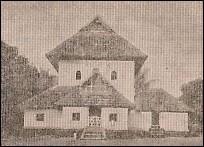
Cheraman masjid of Kodungallur
Medieval Period
The medieval period starts from 9th century to 19th century A.D. There is also an argument that the medieval period ends with the establishment of Portuguese power in early 16th Century. The Second Chera dynasty – Kulasekhara dynastry - ruled over Kerala during the period from 800 A.D. to 1102 A.D. Kulasekhara Varma (800 A.D. to 820A.D.) was the founder of the dynasty. Nine Kings ruled Kerala during the period. Rajasekhara Varma (820 – 844 A.D.), Sthanu Ravi Varma (844 – 855 A.D.), Bhaskara Ravi Varma (962-1019A.D.), Rava Varma Kulasekhara (1090 – 1102 A.D.) were the most prominent rulers during the period. The period saw political stability and development of the state. It was during the period that the Malabar Era (M.E.) came into existence – in 825 A.D. The rulers promoted agriculture and trade. The state developed economically. Trade with Arabs and Chinese had been increased. The capital town was Mahodayapuram. Hindu religion became prominent during the period. Temples were established throughout the state. By the end of Second Chera dynasty, there broke out a war between Cholas and Cheras, which prolonged for about 100 years. Consequentially, the political unity of Kerala deteriorated and Kerala divided into several small units under the control of different Swaroopams (small princely states) and feudal landlords quarrelling each other for supremacy. Major princely states of Kerala during the period were Travancore, Perumbadappu (Cochin), Kozhikode, Kolathunadu. Travancore was a well-organised kingdom with efficient administrators. Cochin was comparatively a small state comprised of the Eranakluam, Thrissur and some parts of Palakkad. Kozhikode kingdom stretched from north of Thrissur to Kozhikode. Zamorin was the King of Kozhikode. Kolathiris were the rulers of Kolathunadu, which comprised of northern regions of Kannur.
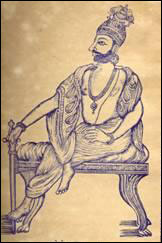
Marthanda Varma
The medieval period witnessed radical changes. During this period ‘Thara’ (village) was the lowest strata of society. The activities of a Thara were managed by Tharakootom, a general body of the village headed by the distinguished family manager or managers of the village. The matters pertaining to a Thara was discussed and finalized here. The practice was to nominate the prominent elder of the Thara as ‘Deshavazhi’ and he was the decision-implementing officer of the Thara. A number of Thara constituted a Nadu, a certain area to an extent of a district or so. Naduvazhi is the ruler of the Nadu. Nattukoottangal assisted him. The chief among the Tharas were the members of Nattukoottangal. Various Nadus constituted a country and the King was there above Naduvazhis. Once in twelve years, Mamangam was conducted to choose the King of Kerala.

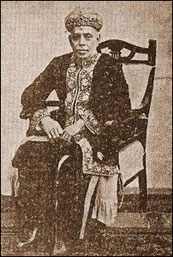
Maharaja of Kochi
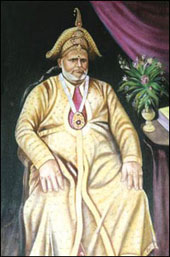
Zamorin
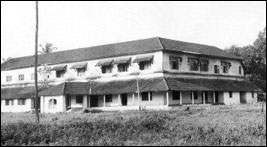
Palace of Zamorin
The period witnessed the arrival and establishment of power by Portuguese, Dutch, English and French. Vaso da Gama reached Kozhikode on 20 May 1498. The Portuguese held their power over Cochin till 1663 when the Zamorin of Kozhikode with the help of Dutch defeated them. The Portuguese held power over Kollam also. The Dutch captured the Kodungallur fort (in 1662), Cochin and Cannannore (in 1663) and established Dutch East India Company. However, they left Kerala by 1795 consequent to their defeat in the war with Marthandavarma of Travancore and capturing of their forts at Kollam and Cochin. The English East India Company started relations with Kerala in 1615. The French conquered Mayyazhi (Mahe) in 1723 and established their colony.

Vasco-da-Gama
Modern Period
History of modern period starts with the supremacy of British over the princely states of Travancore and Cochin. The regions of erstwhile Malabar were already occupied by the British consequent to the defeat of Tippu Sulthan.

Maharajas of Kochi and Travancore at the
time of integration

The British imposed their super power in the princely states of Cochin (in 1791) and Travancore (in 1795 and 1805) through certain treaties. Though the Kerala Varma Pazhassi Raja in Malabar and Velu Thampi Dalava in Travancore challenged the supremacy of British, the latter managed to overcome and suppress these challenges. Till independence, their supremacy continued in Kerala. However, they introduced a chain of radical reforms in education, administration, social and economic fields. After independence, the princely states of Travancore and Cochin integrated into one state known as “Thiru-Kochi” [i.e., Thiruvithamkoor (Travancore) and Kochi (Cochin)] in 1949. The Travancore Maharaja was the Rajapramukh of the new state. On 1st November 1956, the state of Keralam (Kerala) came into existence as a full-fledged state of the Indian Union integrating the Malayalam speaking regions of Thiru-Kochi and Malabar.
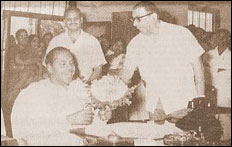
Panampilly, the last Prime Minister of
Kochi being send-off in March 1956
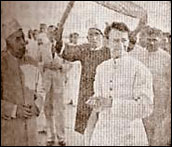
Maharajas of Kochi (left) and Travancore (right)
just before Thiru-Kochi integration












No comments:
Post a Comment